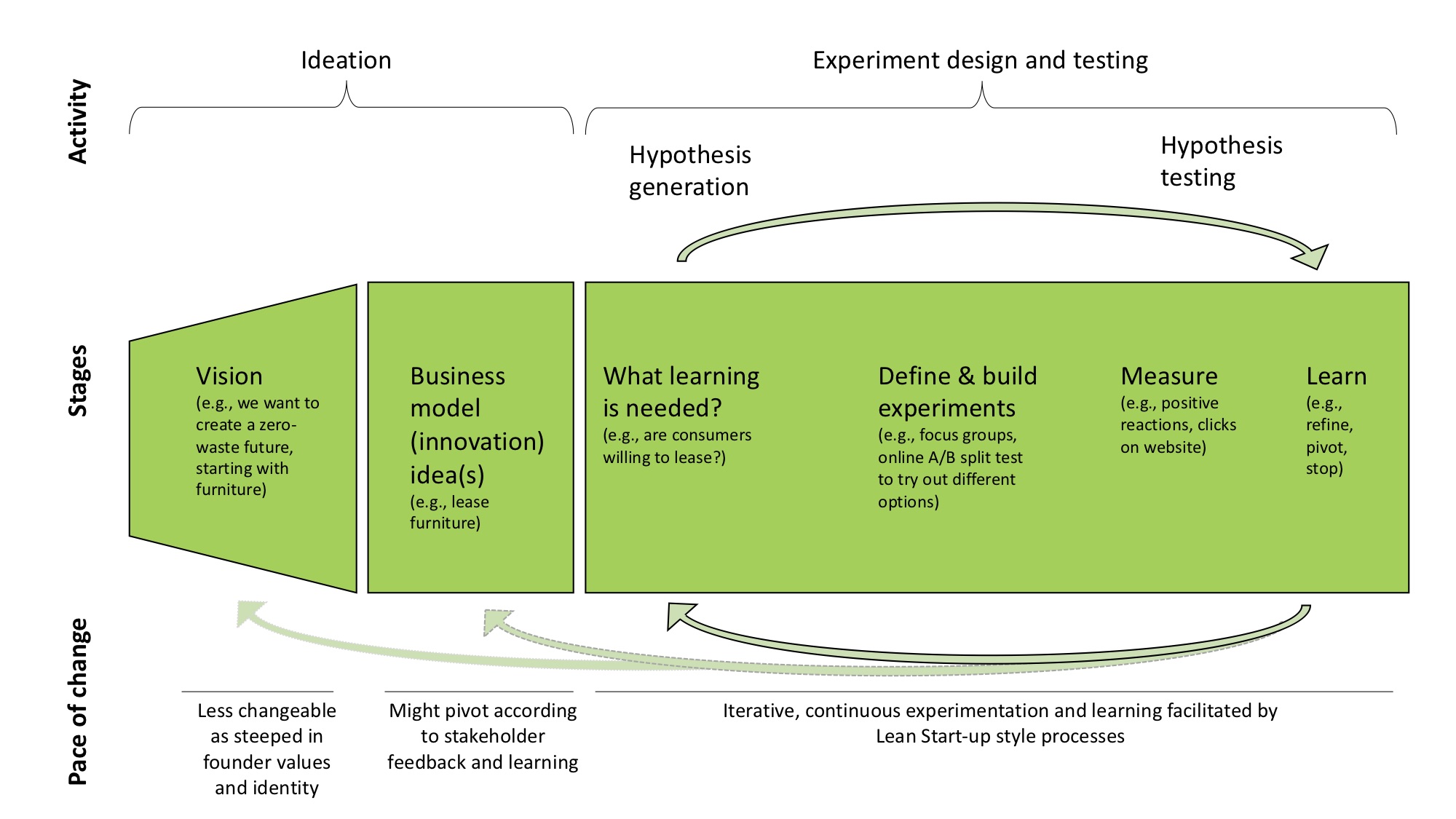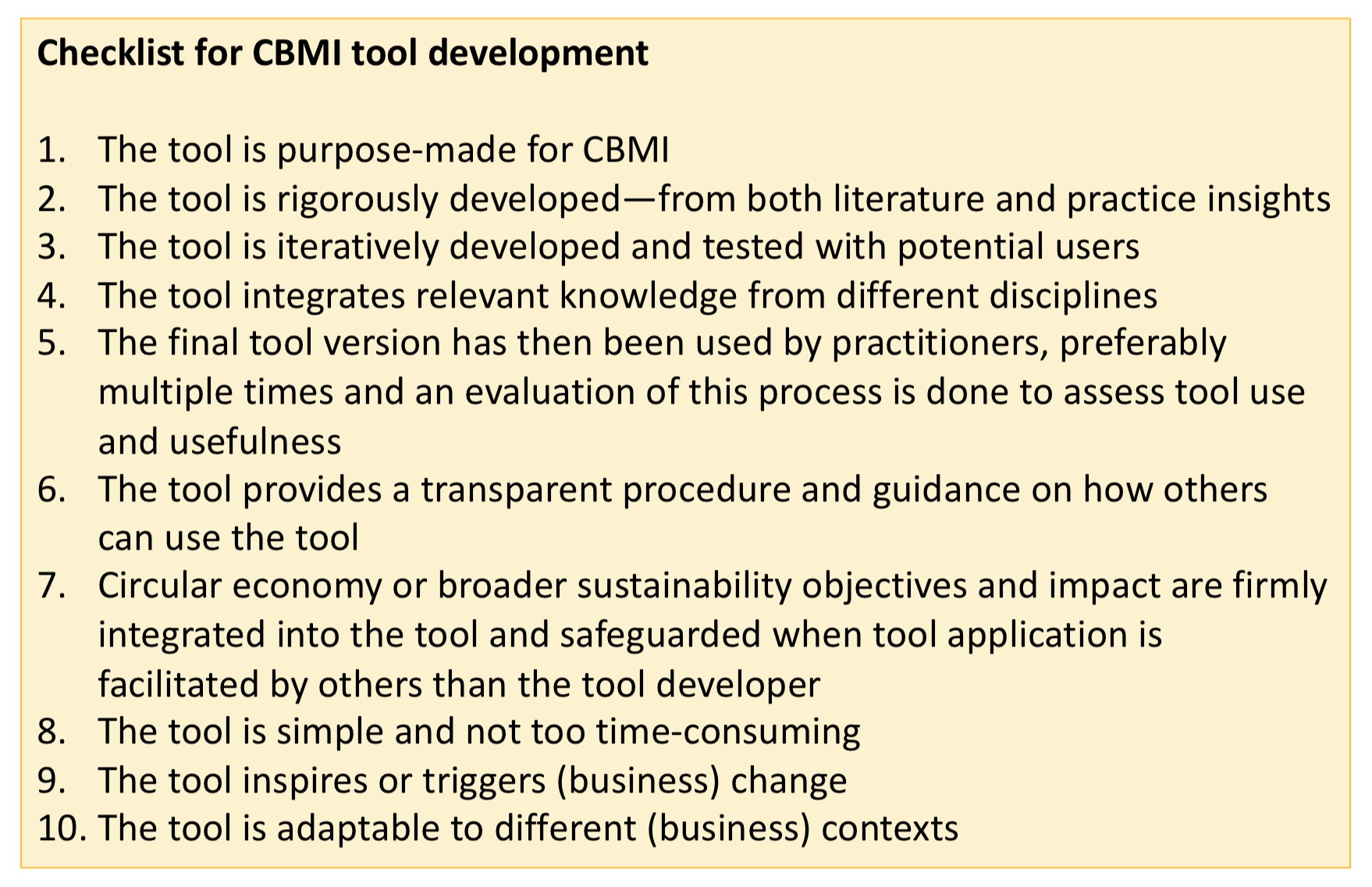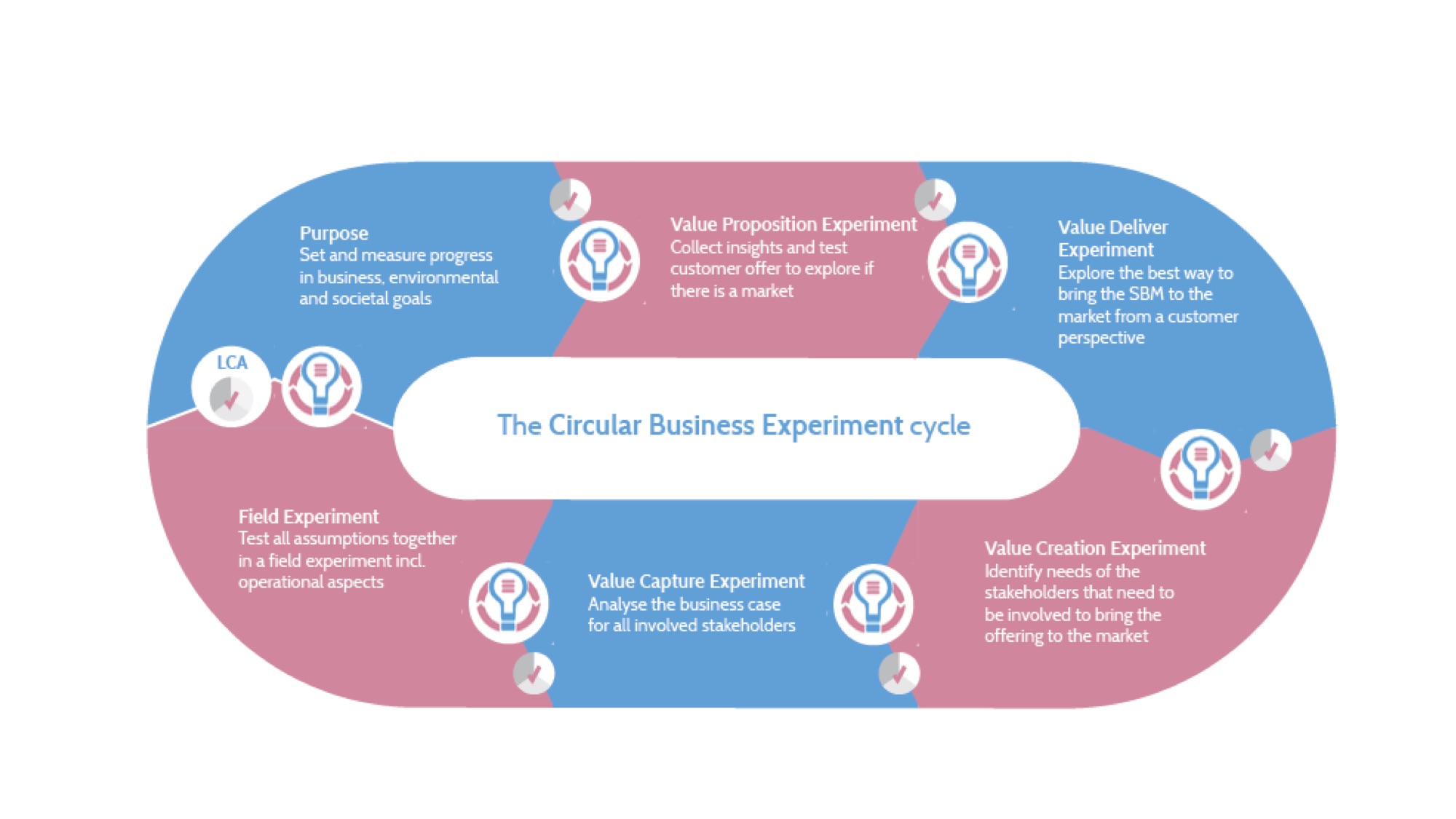Project Circular X jointly hosts a special conference track together with colleagues from Norway, Finland and Germany. The track on “Business model experimentation for sustainability” will be open to for paper submissions at the New Business Models conference 2021.
Track 2.6: Business model experimentation for sustainability
Track chairs: Nancy Bocken, Lars Jacob Tynes Pedersen, Sveinung Jørgensen, Jan Konietzko, Marc Dijk, Ilka Weissbrod, Maria Antikainen
The conference track aims to explore the topic of “Business model experimentation for sustainability”. The aim of experimentation is to put forward and accelerate novel and impactful solutions (Bocken & Snihur, 2020). This special track investigates different contexts in which experimentation could take place, such as new ventures, established business, social businesses, but also local governments such as cities, and collaborations between these actors.
What is business model experimentation for sustainability? How might it be conducted in different contexts? Who are the main actors?
Business model experimentation for sustainability comprises several interrelated stages of experimentation (Antikainen & Bocken 2019) from idea generation to the development of testable ideas and experiments building on hypotheses about the future business (Bland & Osterwalder 2019; Ries, 2011), and the design and execution of such experiments using various tools and methods (Bocken et al. 2019; Bashir et al. 2020; Døskeland & Pedersen 2015). It involves deliberate learning and decision-making about follow up actions (e.g., more experiments, pivot, scalability of results). Moreover, effectual logic (Sarasvathy, 2001; Baldassarre et al., 2020) suggests that companies experiment, using available knowledge, means, and resources and iterative processes through stakeholder interaction.
With business experimentation as a popular topic in business research and practice, broader questions arise. These relate to the ethics of experimentation in the field, the outcomes of experimentation, how to stimulate a culture for experimentation, and how to organize and govern experimentation practices into business development units or other organization units. These are relevant for the understanding of business model experimentation for sustainability (e.g. Weissbrod & Bocken, 2017).
Research questions and themes proposed for this track on Business model experimentation for sustainability” include, but are not limited to:
Process
- How to formulate testable hypotheses in business model experimentation?
- What kind of tools and methods are needed for experimentation?
- To what extent can randomized and controlled experiments be developed in a businesscontext?
- What are the possibilities for collaboration and/or action research in business modelexperimentation for sustainability?
- How to co-create a business model experimentation process with stakeholders?
- How does ecosystem experimentation work, e.g. in cities or regions?
Impacts
- How to measure the circularity/sustainability of the outcomes during business model experimentation?
- What are success and failure cases of experimentation, with reported sustainability impacts?
- What are the unintended consequences and rebound effects associated with the outcomes of business model experiments?
- How does sustainable business model experimentation differ from conventional businessmodel experimentation?
- What are the challenges when scaling-up of findings from experiments in practice?
- How to shift from qualitative and exploratory experimentation to more quantitative,hypothesis-driven experimentation?
Ethics and biases
- How can ethically justifiable experiments be developed in the field?
- What are the design challenges in experimentation, including sampling of customer segments and possible biases?
More information will be available on the conference website.
References



 Figure. Circular Business Experiment Cycle. Developed in
Figure. Circular Business Experiment Cycle. Developed in